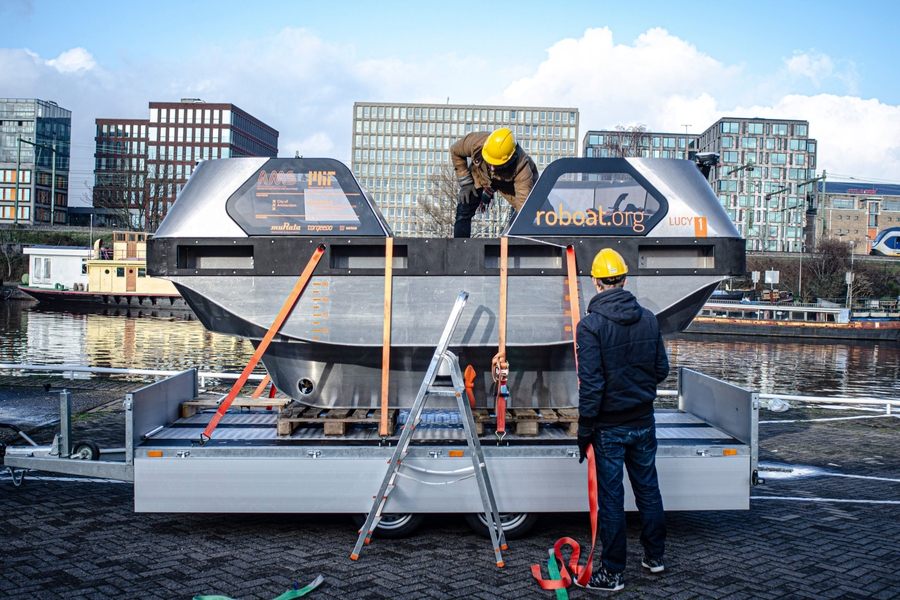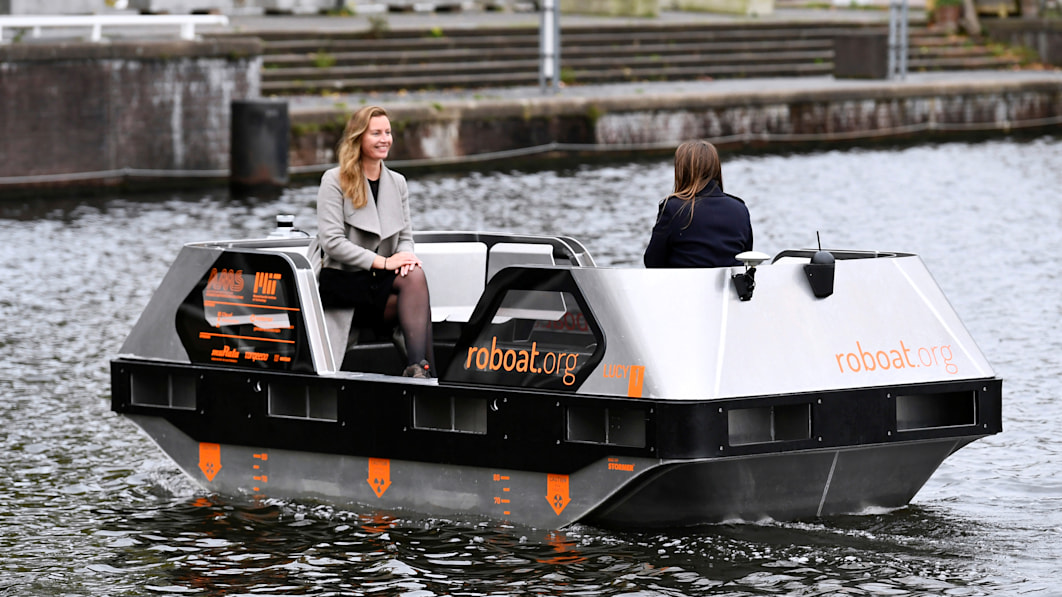The city of Amsterdam is planning to launch autonomous robot boats to ply as water taxis on its waterways. The Amsterdam Institute for Advanced Metropolitan Solutions (AMS Institute) has teamed up with MIT’s Computer Science and Artificial Intelligence Laboratory (CSAIL) and the school’s Senseable City Laboratory for this novel urban transport solution. The Roboat project is moving beyond the prototyping stage, as the team launched two of the autonomous boats in the city this year. These boats can be used for everything from waste collection to forming impromptu bridges by linking up. A universal hull with a swappable top deck allows the Roboat platform to be adapted for a variety of uses, including ferrying passengers.
The futuristic-looking Roboat was first tested as a small prototype in the MIT pool back in 2015. This was followed in 2020 by the launch of a half-scale model that was 2 metres long and demonstrated technological promise.
This year, two full-scale Roboats that can easily carry up to five people, collect waste, deliver goods, and provide on-demand infrastructure were launched.
The sleek black and gray watercraft is a fully electrical boat with a wireless charging battery that’s capable of running up to 10 hours of operation and wireless charging capabilities. It features two seats that face each other.
Its latching mechanism is one of its most impressive feats: small cameras on the boat guide it to the docking station, or other boats, when they detect specific QR codes. “The system allows Roboat to connect to other boats, and to the docking station, to form temporary bridges to alleviate traffic, as well as floating stages and squares, which wasn’t possible with the last iteration,” says Carlo Ratti, professor of the practice in the MIT Department of Urban Studies and Planning (DUSP) and director of the Senseable City Lab.

“We now have higher precision and robustness in the perception, navigation, and control systems, including new functions, such as close-proximity approach mode for latching capabilities, and improved dynamic positioning, so the boat can navigate real-world waters,” says Daniela Rus, MIT professor of electrical engineering and computer science and director of CSAIL. “Roboat’s control system is adaptive to the number of people in the boat.”
Using GPS, the boat autonomously decides on a safe route from A to B, while continuously scanning the environment to avoid collisions with objects, such as bridges, pillars, and other boats.
To autonomously determine a free path and avoid crashing into objects, Roboat uses lidar and a number of cameras to enable a 360-degree view. This bundle of sensors is referred to as the “perception kit” and lets Roboat understand its surroundings. When the perception picks up an unseen object, like a canoe, for example, the algorithm flags the item as “unknown.” When the team later looks at the collected data from the day, the object is manually selected and can be tagged as “canoe.”
“The control algorithms — similar to ones used for self-driving cars — function a little like a coxswain giving orders to rowers, by translating a given path into instructions toward the “thrusters,” which are the propellers that help the boat move. But like a bridge keeper, an onshore operator will be deployed to monitor Roboat – one operator can monitor 50 units – remotely from a control centre. One operator can monitor over 50 Roboat units, ensuring smooth operations, ” says Daniela Rus, director of the Computer Science and Artificial Intelligence Laboratory (CSAIL).
Roboat, by design, is also versatile. The team created a universal “hull” design — that’s the part of the boat that rides both in and on top of the water. While regular boats have unique hulls, designed for specific purposes, Roboat has a universal hull design where the base is the same, but the top decks can be switched out depending on the use case.
The next step for Roboat is to pilot the technology in the public domain. “The historic center of Amsterdam is the perfect place to start, with its capillary network of canals suffering from contemporary challenges, such as mobility and logistics,” says Stephan van Dijk, director of innovation at AMS Institute.
You might also like:
The world’s first 3D-printed steel bridge debuts in Amsterdam
French art foundation to launch mobile museum on board the world’s largest catamaran worth USD32m




